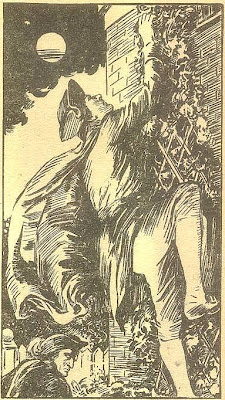
It’s been a long time since I read a Parker book. Too long. So this week’s Forgotten Books Westlake Tribute (more
HERE), seemed the perfect excuse. And I’m mighty glad I took advantage of it.
What I didn’t remember was that the first three books in the series form a sort of trilogy. While book 1,
The Hunter, works fine as a stand-alone novel, the next two volumes are pretty much dependent on the first book, and upon each other. Read in order, they tell a fine and rich tale, but a reader picking up just
The Man with the Getaway Face or
The Outfit might have a less than satisfying experience.
Read as a trilogy, the three books nicely compliment each other.
The Hunter sees Parker released from jail and on the hunt to square himself with the man who betrayed him. In the process, he incurs the wrath of the mob, here known as The Outfit. In
The Man with the Getaway Face, Parker gets plastic surgery in an effort to return to his criminal career without interference from the organization. When that plan fails, he’s forced, in
The Outfit, to take drastic action to get them off his back.

Having read these before, I knew they were good. And of course the whole series is pretty much universally revered by aficionados of noir. But I did find a couple of surprises.
First, it wasn’t until I was well into the third book that I was reminded (by Westlake admirer Doug Levin) that these novels were written almost 50 years ago. The prose and dialogue is so fresh - and dare I say
timeless? - that they seem brand new. It was only on reflection that I noticed there were no computers or cell phones.
Where the stories may show their age is in the story structure. Westlake employed some techniques that might not pass muster today - at least for an aspiring novelist.
In at least two instances, the story follows the point of view of a supporting character to a scene where Parker makes a surprise appearance. We know this is bad (and probably fatal) news for the supporting character and want to see how it plays out. Instead, Westlake backtracks several days and spends several chapters showing us what Parker was doing to lead him to that confrontation.

In both cases, Westlake’s saving grace is that Parker’s point of view is so compelling that we don’t mind the lack of suspense. In the hands of a lesser writer, though, or with a character lacking Parker’s intensity, I’m not sure it would work.
The Man with the Getaway Face has a particularly strange structure. The main plot, following Parker and friends as they plan and carry out a heist, ends with the book only two-thirds over. For the final third, we’re left the remains of a much less interesting subplot, and sent backtracking in the point of view of a less interesting character. Parker eventually returns, of course, and saves the story, but the end of the book is anticlimactic, and satisfying only in that it sets up the action to come in the next book,
The Outfit.
Despite those lapses in suspense, I found all three books hard to put down. I’ve just started book four,
The Mourner, and have three more in the To-Be-Read pile. So whatever Westlake was doing here, it sure worked on me.
Cover trivia: Check out Parker's hands on the covers of the first two books!































